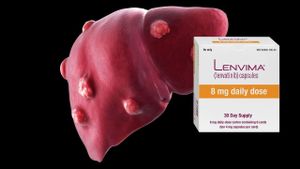Salmonella Typhimurium (ST) is notorious for its role as a foodborne pathogen responsible for millions of illnesses worldwide. Recently, researchers have turned their attention to alternative treatments due to rising antibiotic resistance, and one promising candidate has emerged: purpurin.
Purpurin, an anthraquinone derived from the roots of Rubia cordifolia, has demonstrated the ability to suppress the invasion of ST by directly targeting its virulence machinery. The research, conducted at Jilin University, highlights purpurin's mechanism of action, which hinges on its ability to inhibit the secretion of type three secretion system 1 (T3SS-1) effector proteins—crucial players in Salmonella's invasion strategy.
Under normal circumstances, Salmonella deploys T3SS-1 to inject effector proteins such as SipA and SopB directly at the host cell level, allowing it to breach cellular defenses and propagate infections. By reducing the secretion of these proteins, purpurin effectively blocks the initial stages of ST's entry, showcasing significant inhibitory effects with over 90% success at specific concentrations.
Through rigorous testing using gentamicin protection assays, the team found purpurin showed no detrimental effects on bacterial growth or host cell viability, making it a potentially safer option compared to traditional antibiotics. Notably, its minimal impact on the natural microbial flora suggests it does not exert selective pressure on bacterial populations—a common concern with conventional treatments.
Animal trials reinforced these conclusions; mice treated with purpurin displayed enhanced survival rates—up to 50%—when infected with lethal doses of ST, alongside reduced pathology and inflammation. The therapeutic efficacy of purpurin indicates its ability to moderate the impact of ST without exacerbation of side effects traditionally associated with broader-spectrum antibiotics.
Further investigation revealed purpurin's selective targeting of T3SS-1, independent of the regulatory networks familiar to many other antimicrobial strategies. Researchers noted, "Purpurin selectively inhibits T3SS-1 secretion without affecting effector protein expression," emphasizing its unique role among antivirulence agents.
This pivotal discovery positions purpurin as not just another antibacterial agent but as part of the growing field of antivirulence therapeutics—a method of combatting pathogens by thwarting their capacity to harm rather than merely kill. This approach could transform treatment protocols for infections including those caused by Salmonella, which remain significant public health threats.
Future research avenues may include human clinical trials and investigations addressing the compound's pharmacokinetics and potential longevity of exposure. Although initial studies suggest low cytotoxicity, the long-term effects of purpurin on organ systems warrant careful scrutiny.
Overall, purpurin highlights the promise of focusing on specific virulence factors as targets for new drugs, offering renewed hope against the stubborn issue of antibiotic resistance plaguing modern medicine.



